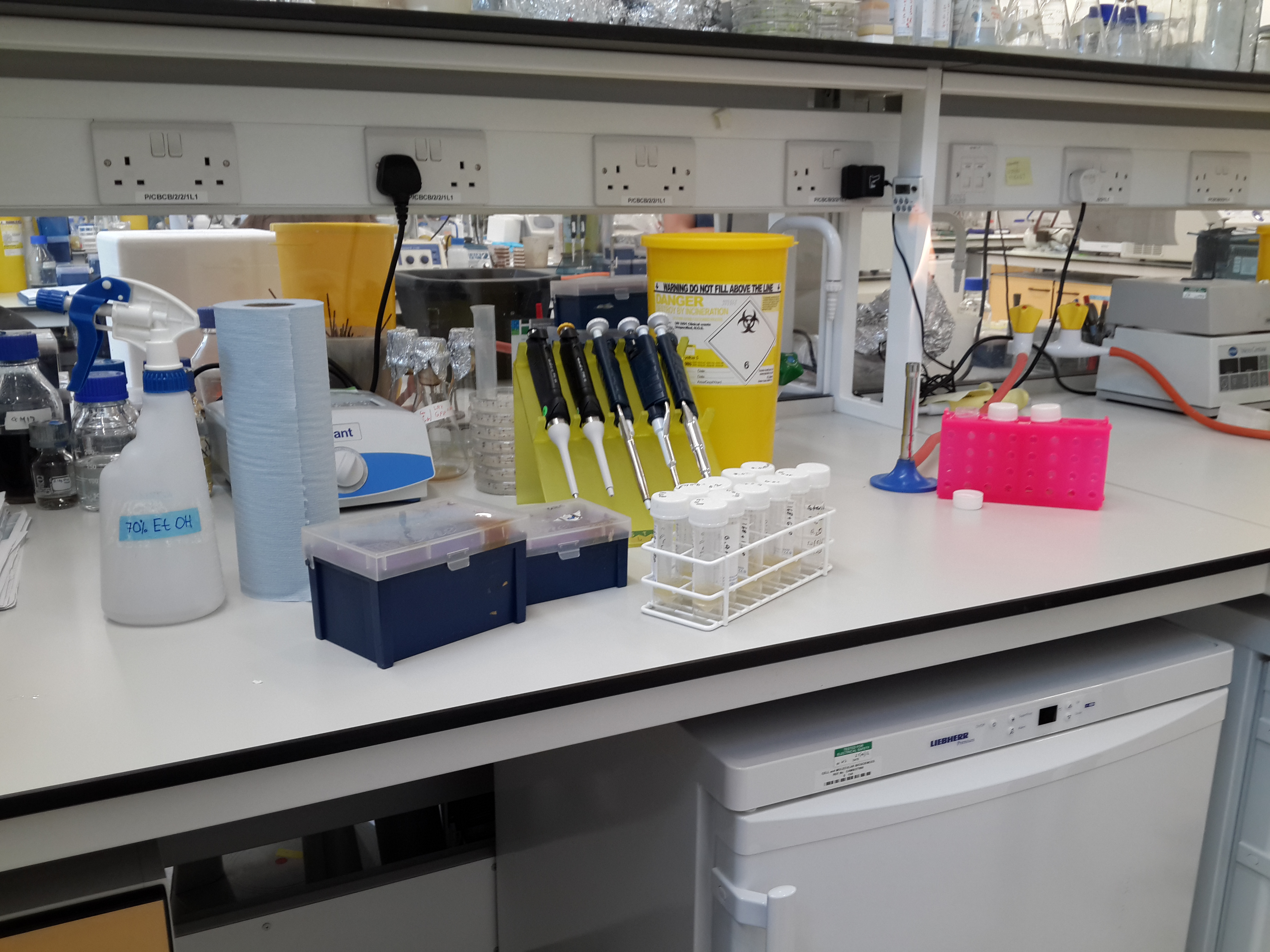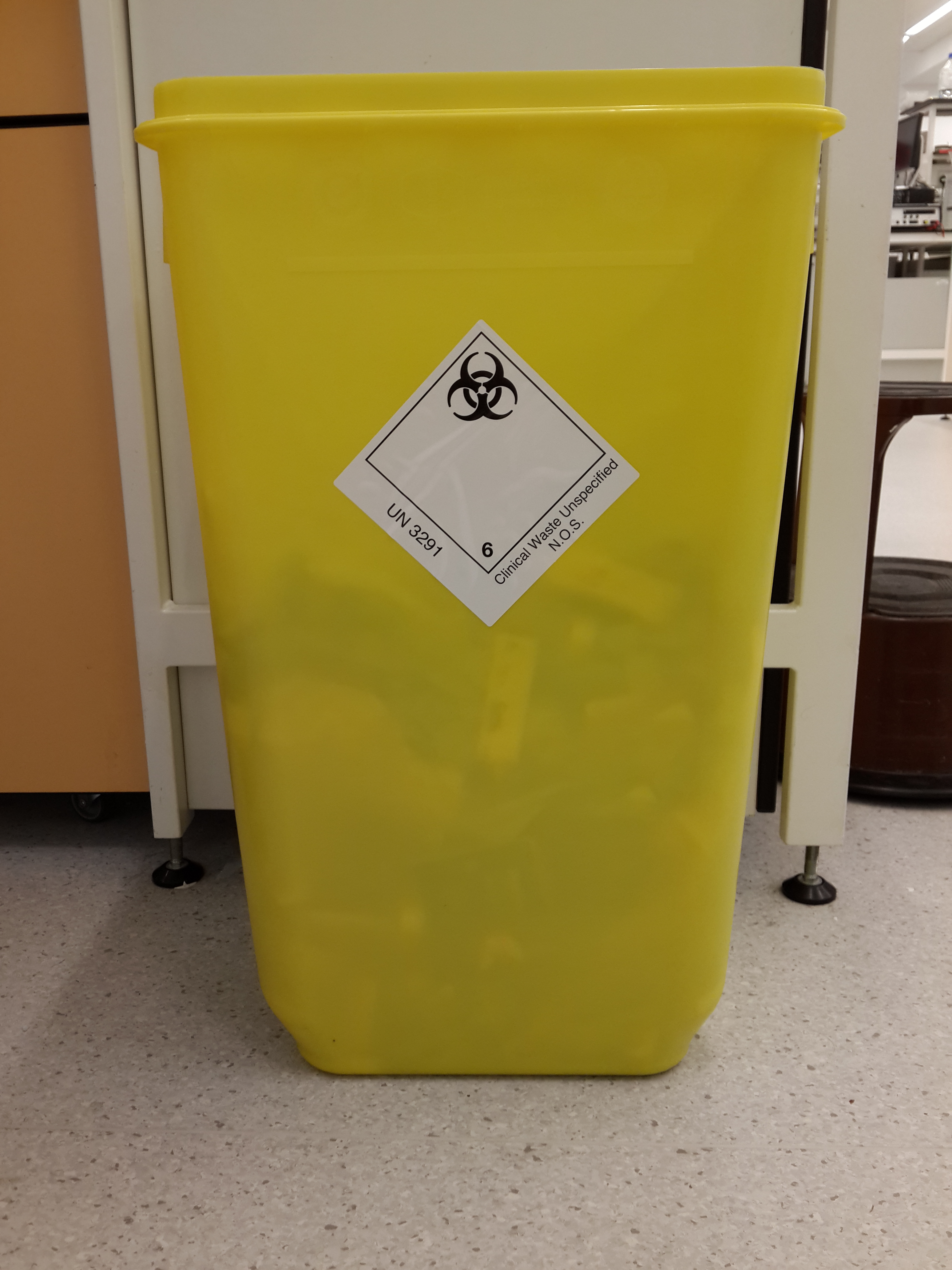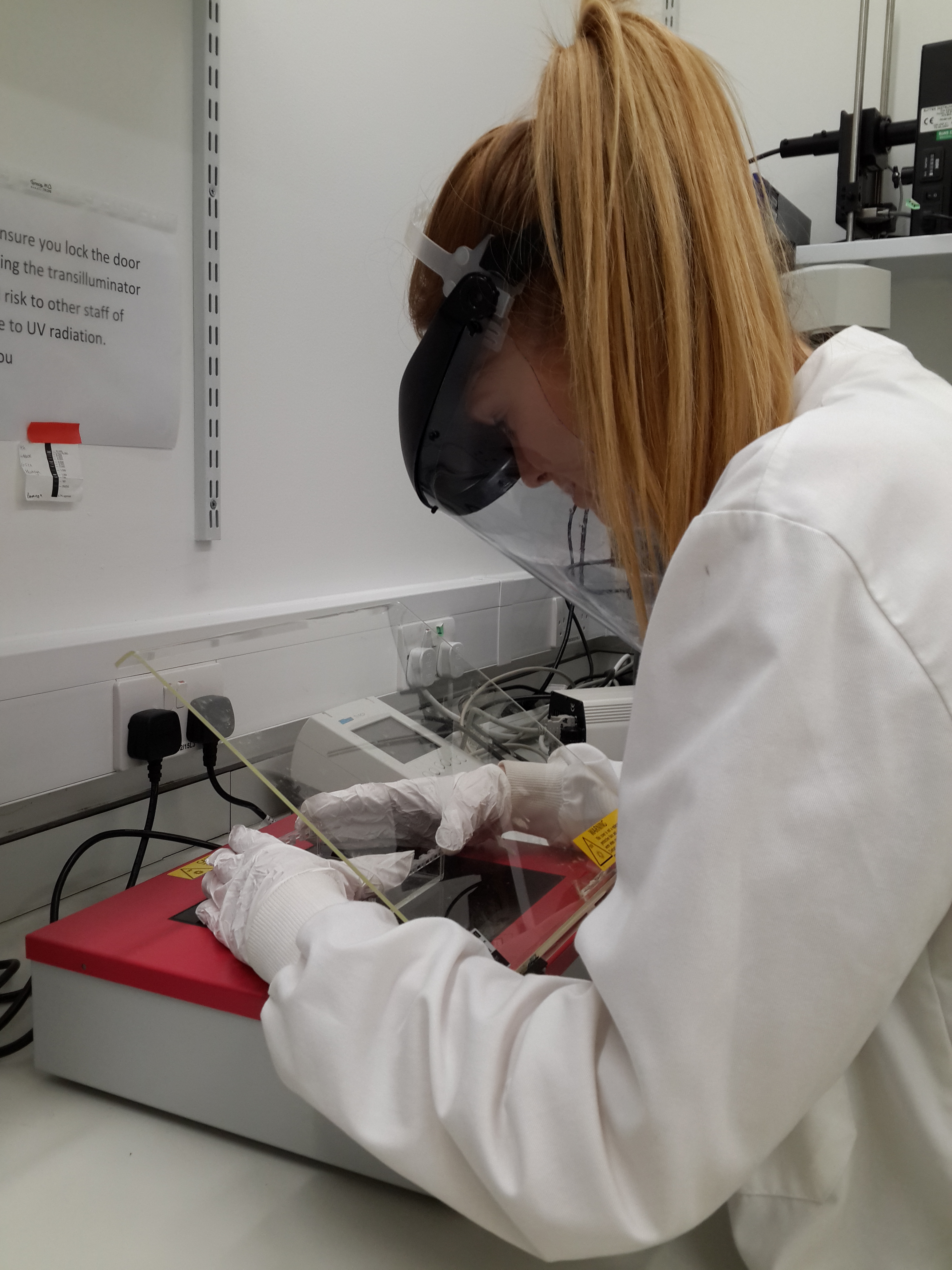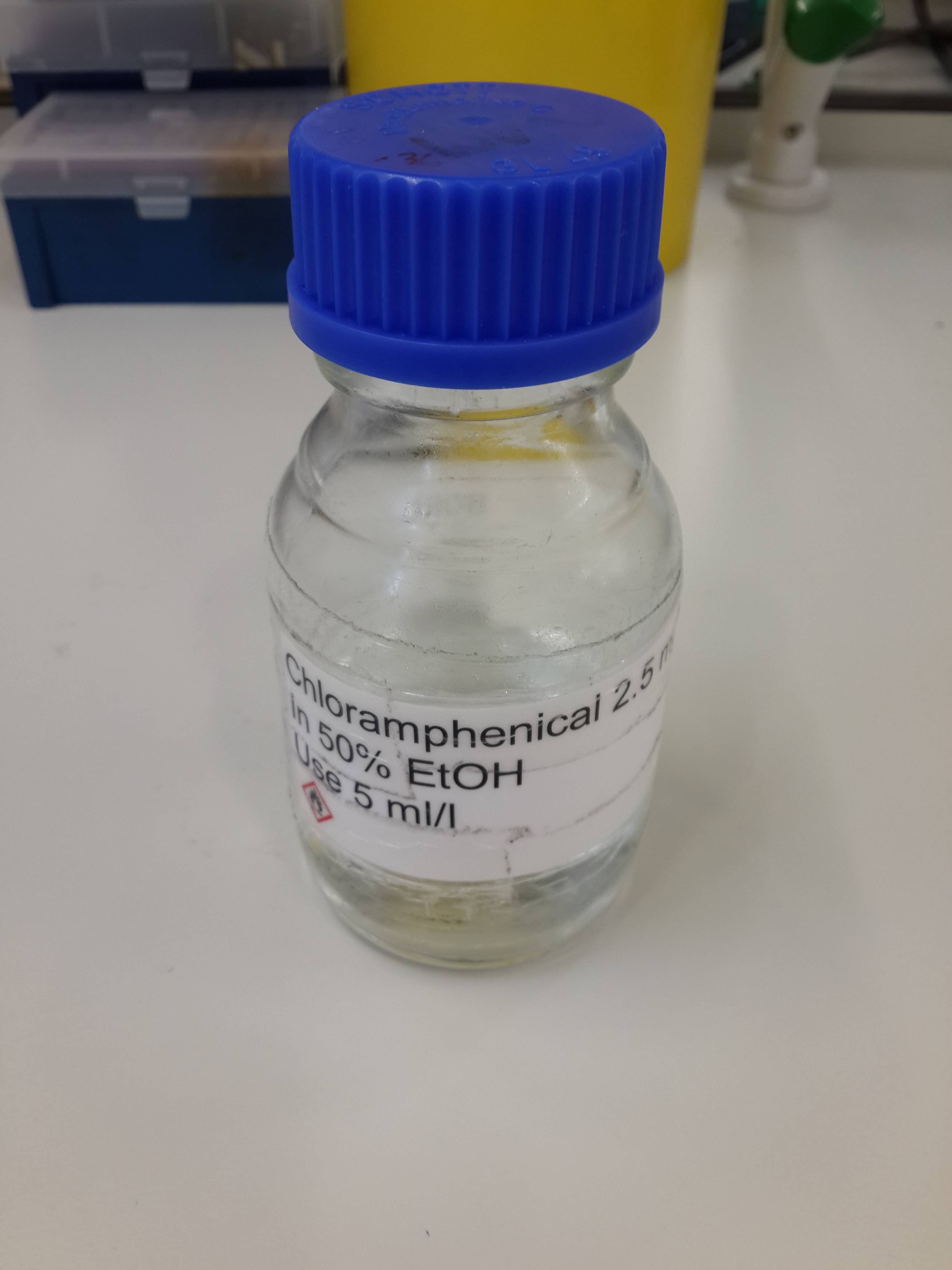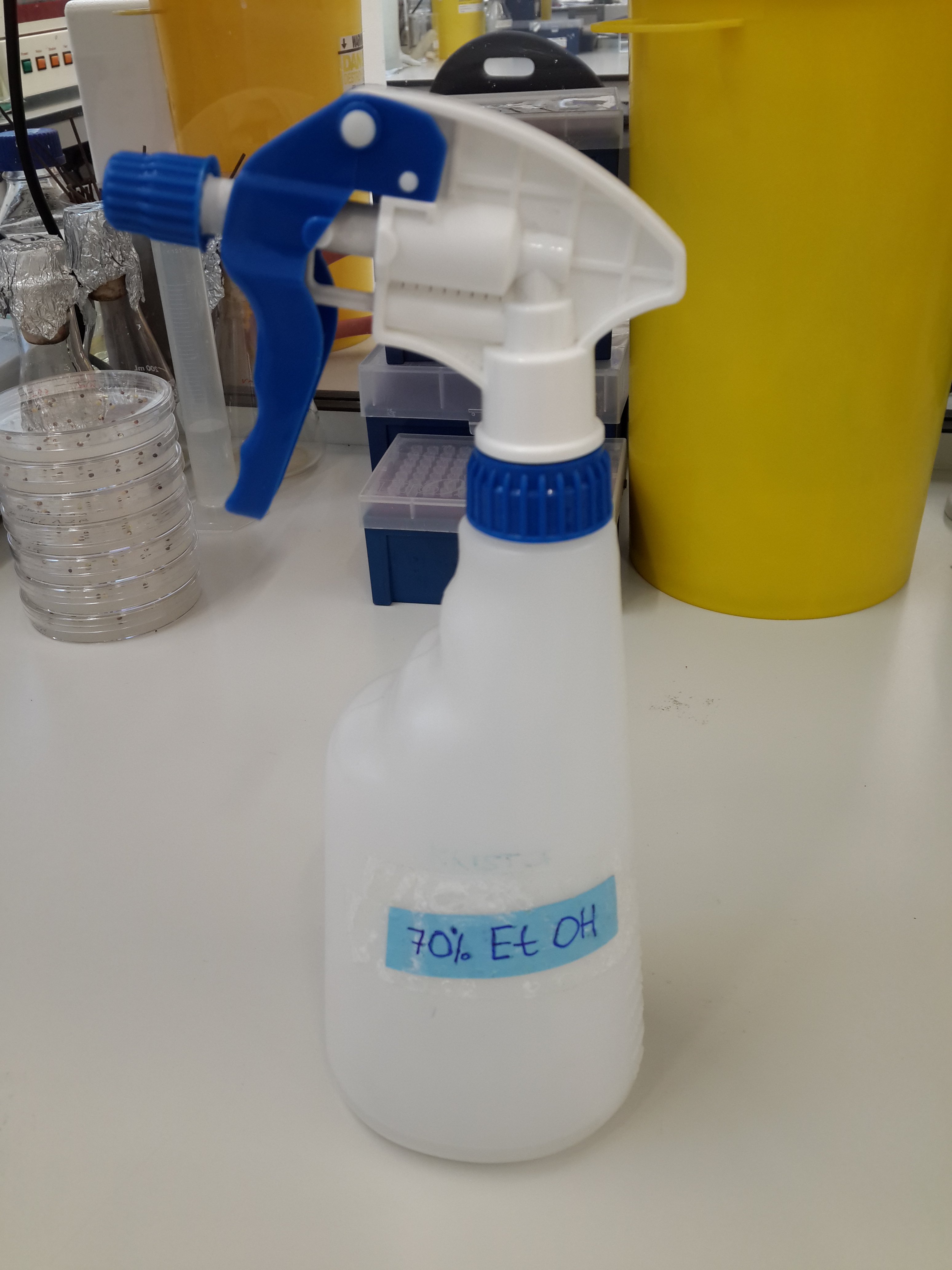Team:Newcastle/HP/Safety
From 2013.igem.org

Contents |
Safety
University Regulations
Our university has an Occupational Health and Safety Service available which aims to maximise biological safety throughout research and teaching laboratories within Newcastle University. If any enquiries or concerns are raised, the Biological Safety Supervisor and the University Biological Safety Officer can be contacted for advice and guidance. As well as this, biosafety resources can be located on the [http://safety.ncl.ac.uk/ Newcastle University Safety Office page] to provide further information on a range of safety topics including approved biological agents, biological safety cabinets explanation etc. Our team mainly works in laboratories in the [http://www.ncl.ac.uk/cbcb/ Centre of Bacterial Cell Biology (CBCB)] which is a BioSafety Level (BSL) rating 2. Due to lack of space, we also use the laboratories in the Ridley Building which is a BSL rating 1.
PEALS
Within the university, there is a [http://www.ncl.ac.uk/peals/ Policy, Ethics and Life Sciences (PEALS) Centre], they aim to "produce world class research focused on the social and ethical debates around the contemporary life sciences. Working with a wide range of academic and community-based partners, we will develop rigorous and socially engaged analysis, innovative teaching, and public dialogue that inform and contributes to future practices and policies." We had a discussion with the executive director, Professor Janice McLaughlin, regarding biosafety and responsibility. To see more about the ethical considerations raised please see our ethics page.
Training
The team undertook a two week period of lab training to minimize risks and accidents during our summer project in the lab. During these two weeks, we familiarized ourselves with basic techniques such as pipetting and the use of machinery (centrifuges, vortexes, nanodrop, microscopes etc.). We also learnt about how the lab is laid out and the waste management procedures specific to the lab. During the training, key safety guidelines were enforced which can be seen in more detail here. Before we entered the lab for training, we read and signed the Control of Substances Hazardous to Health (COSHH) forms after they had been explained by the lab’s Safety Officer [http://www.ncl.ac.uk/cbcb/staff/profile/kate.brown Kate Brown].
Lab Safety
Lab safety guidelines and policies are shown in the University Safety Policy. We will highlight the regulations put in place to ensure maximum protection when working in the lab.
Accidents and First Aid
In the case of an accident in the lab, the priority is to ensure the situation is made safe and the injured individual is removed from the area. If the injury or illness is severe emergency help can be contacted on 6666 or 9-999. Following this, an accident report is filled out with details of the incident and given to the appropriate safety officer via the following [http://www.safety.ncl.ac.uk/Home.aspx link]. It is important that this is filled in as soon as possible after the event and updated with further information if it should come to light. Occassionally, some information can made available to external bodies if it is necessary.
Fire
Prior to starting work in the lab, the fire exits, extinguishers and assembly points of the building were highlighted. We were told on hearing the alarm, evacuate the building through the nearest exit without using lifts, blocking exits or returning to the building. The smoke detectors are regularly checked to ensure they are working.
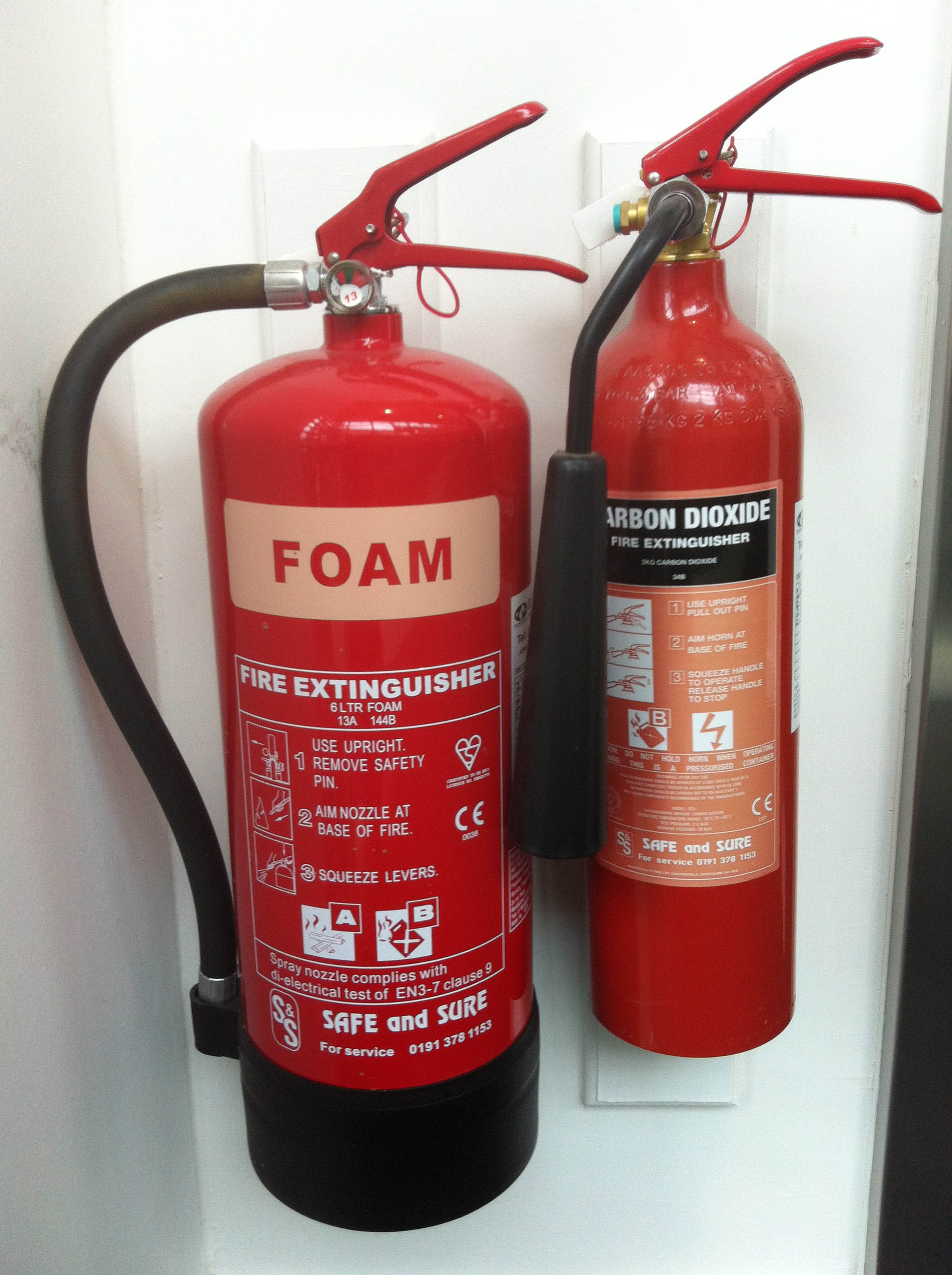
Storage and Spills
The procedure for spilt material depends on the type and amount spilt. If the spillage is likely to cause a fire or explosion, follow fire guidelines and sound the alarm. Details of handling specific spillages can be found in the COSHH forms. For example, small spillages of microbial cultures should be covered with a paper towel and treated with appropriate disinfectants. The paper towel should be disposed of appropriatedly because autoclaving is needed. For larger spills, the BioSafety Advisor should be informed. Concentrated acids and flammable solvents must both be stored in a metal box or cupboard and not with oxidising agents, toxic or corrosive non-flammable liquids.
Protective Clothing
Lab coats must be worn at all times in the lab. For our lab, it is important for us to wear Howie coats which have cuffed sleeves and a high collar as our lab is a Containment level II lab. When necessary according to the COSHH forms, gloves and eye protection should be worn, removing one glove for opening doors. If an individual is allergic to latex gloves, a latex free alternative can be provided.
Eating, Drinking and Smoking
There is no eating, drinking or smoking of any kind anywhere in the lab.
Out of Hours Working
Access to the lab for iGEM students is restricted to the hours of 8am-6pm.
Equipment
For fume cupboards to function effectively, they must be kept clear and not used as a storage area. For effective and safe results, the front of the hood must be pulled down as far as possible whilst using chemicals. The iGEM team also used a mircrowave oven, mainly to melt agar. Before using the mircrowave it was highlighted that for safe use, all bottle caps must be loosened before being heated by the mircrowave to prevent them overhearting and possibly exploding. During the lab induction period, all team members recived training on use of the centrifuge, including how to accuratly balance it and what to do if an error occurs.
Waste Disposal
There are two types of sinks in the lab, the Howie sink and the laboratory sink. The former is limited to washing hands while the latter is used to dispose of harmless or low hazard liquids. Liquids of a higher risk should be disposed of in the waste flask which is autoclaved before removal. There are multiple yellow clinical waste and sharps bin situated throughout the lab highlighted with appropriate label. All biological waste should go into these bins before being marked, signed for and sent to autoclaving. This is to ensure no biological waste escapes into the environment causing cross contamination.
Bacterial Strains
E. coli (DH5a & XL-1Blue)
DH5a and XL-1Blue are both common K-12 derivatives of E. coli that are classed as hazard group 1 as they are not pathogenic to humans, animals, plants and microorganisms. Although these strains rarely pose a threat to healthy individuals because they have very limited survivability in the environment and normal flora prevents colonization in a healthy colon. The risk is dependent on the circumstance and environment with the most common route being absorption or ingestion. Therefore, optimum safety in the lab is important to limit the potential risk of this colonization. To read in more detail please see this [http://epa.gov/biotech_rule/pubs/fra/fra004.htm page].
B. subtilis (168 & BSB1)
B. subtilis is a common bacterium recovered from water, soil, air and decomposing plant residue. It is also able to reside in a wide range of temperatures which may cause a problem as it has been seen to be associated with a variety of plant diseases such as soft rot in garlic cloves and potato tubers. (Kararah et al., 1985; Claus, 1986) Although B. subtilis is very abundant in the environment, it does not seem to have any specialized attachment mechanisms usually found in organisms that colonize humans. It is only known to cause disease in severely immunosuppressed patients. Horizontal gene transfer has been shown to occur in B. subtilis between strains grown together in soil. Although indigenous virulence factor gene is not observed in B. subtilis, it may be possible for the bacterium to acquire these genes from closely related bacterium within the genus. To read in more detail please see this [http://epa.gov/biotech_rule/pubs/pdf/fra009.pdf page]
B. subtilis L-form
L-forms are a strain of B. subtilis that lacks the cell wall. It is osmotically unstable and even if made large scale, the L-forms will not be able to survive in the environment without specific media needed for stability. Therefore, there are limited risks associated.
Bio-Hazards
Ultraviolet (UV) Radiation
Ultraviolet light is a 180-400nm wavelength non-ionizing radiation and the degree of harm depends on the specific wavelength. The most harmful natural type (180-280nm) is filtered out by the earth’s ozone layer. However, man-made sources of UV radiation can be used in the lab such as transilluminators, germicidal lamps and UV lasers. In our project, we used a transilluminator that uses UV light to allow us to visualise DNA separated by electrophoresis on an agarose gel. A transilluminator uses a UVB light source (280-314nm) which can be dangerous with over exposure. Most commonly, exposure affects the skin and cornea of the eyes. This may result in sunburn, premature skin aging, skin cancer and photokeratitis. In order to prevent these effects, the transilluminator is fitted with a protective shield and when in use gloves and a visor must be worn to minimize UV radiation penetrating the skin and eyes.
Isopropyl β-D-1-thiogalactopyranoside (IPTG)
IPTG is used as a substitute for allolactose, a disaccharide inducer of the lac operon. An alternative to allolactose is needed because it is broken down by β-galactosidase, so concentrations do not remain constant during experiments. However IPTG is unaffected by β-galactosidase and is therefore useful in keeping the expression of genes, under the control of the lac operon, constant. The use of IPTG is necessary for our project because one of our BioBricks Hbsu-xFP Fusion is under the control of the Pspac promoter which is IPTG induced. Caution must be taken when using IPTG because the substance is a suspected carcinogen therefore the maximum quantity used in the powder form is 10g and in a working stock of 1M, 1ml.
Chloramphenicol
Chloramphenicol is an antibiotic which is affective against many gram-positive and gram-negative bacteria. However, due to drug resistance, its use in developed countries is limited although it is cheap and easily produced. This is why it is still the antibiotic of choice in countries that are less developed. Although use is limited in the medical field, it is commonly used in research for selection purposes. For our project in specific, we have used chloramphenicol to select for colonies where one of our BioBricks Switch Brick has integrated due to the fact that it contains an antibiotic resistance marker for chloramphenicol. Chloramphenicol may be carcinogenic and cause heritable genetic damage therefore precautions must be taken when working with it. This includes, having the maximum stock solution concentration of 10mg/ml and a maximum quantity of 5g so damage is limited.
Ethanol
Ethanol is commonly used for cleaning purposes and sterilization in the lab to wipe down surfaces and pipettes. The main problem associated with ethanol is irritation especially in the eyes. It may cause pain or permanent corneal damage. Severe systemic effects from inhalation include nausea, headaches and dizziness. In order to minimize the chance of these health hazards the standard concentration for cleaning purposes is 70%. In case of accidental spillage, eye washes are situated by multiple sinks in the lab.
MiniPrep Reagents
Miniprep is a technique regularly used in our project to purify plasmid DNA. It requires a number of hazardous substances including Tris, hydrochloric acid, EDTA, sodium hydroxide, sodium dodecyl sulphate, acetic acid, isopropanol and ethanol. All of the reagents pose a health hazard if inhaled, ingested or absorbed and can target skin, eyes, respiratory tract and mucous membranes. The areas affected depend on the route of exposure. Isopropanol, if inhaled, may cause drowsiness and dizziness. In order to prevent these health risks, the user must wear a lab coat, gloves and goggles. If contact with the skin is made, wash immediately.
References
Claus, D.a.R.C.W.B. (1986) 'Genus Bacillus Cohn 1872', Manual of Systematic Bacteriology, 2(In: P.H.A. Sneath, et al. (eds.), Bergey's), pp. 1105-1139.
Kararah, M.A., F.M. Barakat, M.S. Mikhail and Fouly., H.M. (1985) 'Pathophysiology in garlic cloves inoculated with Bacillus subtilis, Bacillus pumilus, and Erwinia carotovora.', Egyptian J. Phytopathol, 17(2), pp. 131-140.
 "
"
